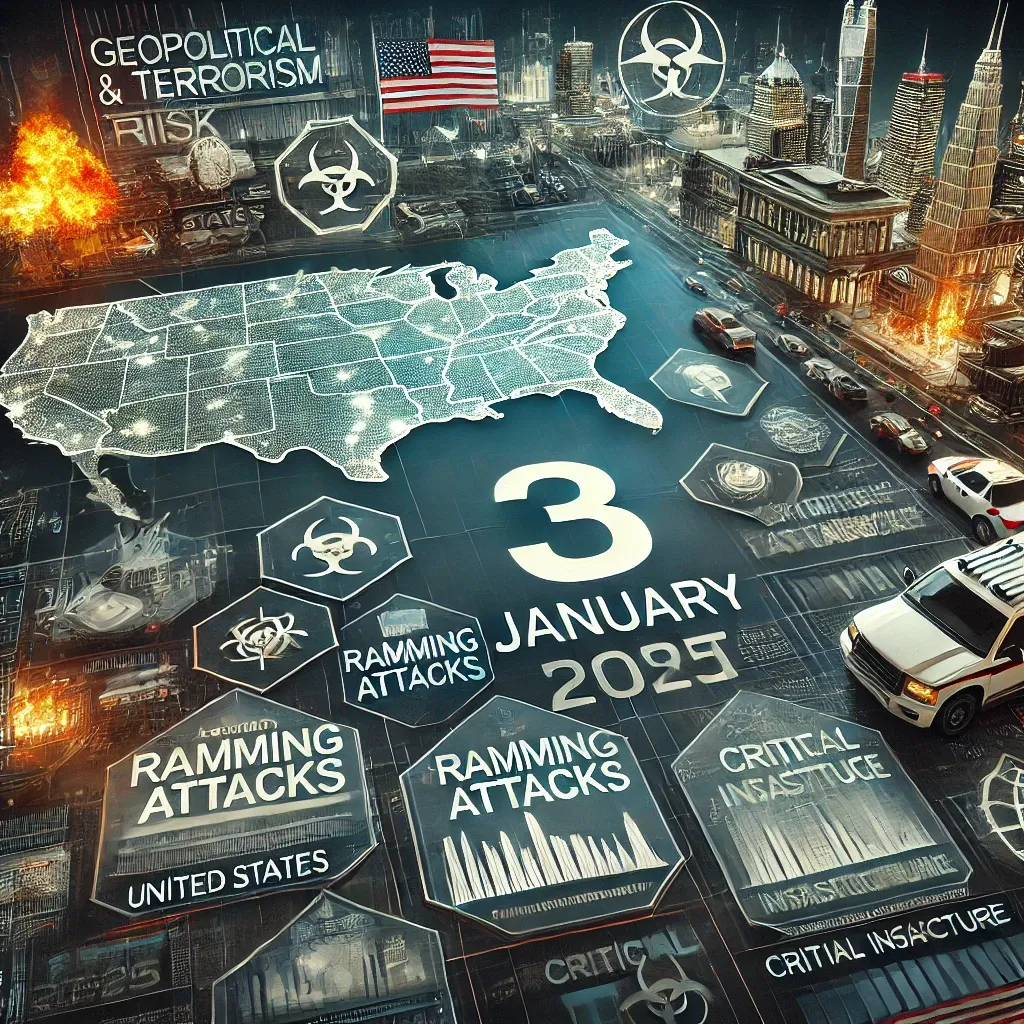Prime Rogue Daily Risk Report: January 3, 2025
Executive Summary
January 3, 2025, is shaped by significant historical anniversaries, recent geopolitical tensions, and emerging security risks. Key events such as the United States’ early military actions in the War on Terror and geopolitical maneuvers in Asia resonate in today’s security landscape. This report highlights how these elements contribute to the current risk environment, providing stakeholders with actionable insights to navigate an unpredictable global climate.
1. Historical Significance and Symbolism
Key Anniversaries
- Start of the Mars Exploration Rovers Mission (2004):
- The Mars Exploration Rover Spirit landed on Mars on January 3, 2004. While primarily a scientific achievement, anniversaries like this can be symbolically co-opted by activist groups highlighting issues like technological inequality, space militarization, or climate inaction.
- U.S. Military Strikes in Iraq (1991):
- Preceding the Gulf War, the U.S. launched several reconnaissance and minor military operations on January 3. These events are often referenced by extremist groups as part of anti-Western rhetoric, particularly in Middle Eastern narratives.
- Cuban Revolution (1959):
- The capture of Havana by Fidel Castro’s forces on January 3 marked a pivotal moment in the Cuban Revolution. This anniversary often stirs debates on communism and anti-capitalism, occasionally leading to protests or public demonstrations in regions with polarized political ideologies.
Potential Implications
- Middle Eastern Narratives: Groups may use this day to highlight perceived historical grievances against Western intervention, increasing propaganda and recruitment efforts.
- Activism and Demonstrations: Protests related to anti-imperialism, socialism, or environmental concerns may occur in major urban areas.
2. Recent Events Shaping Risks
Domestic Terrorism in the U.S.:
- New Orleans Attack (January 1, 2025): The continued fallout from this attack raises questions about security at public venues, particularly as investigations reveal the assailant’s ties to global extremist networks.
- Las Vegas Vehicle Ramming (January 2, 2025): Highlighting vulnerabilities in pedestrian-heavy areas, this incident underscores the potential for similar copycat attacks.
Geopolitical Tensions:
- Escalating U.S.-China Strains: Trade negotiations remain at a standstill, with cyberattacks increasingly viewed as retaliatory measures. Key targets include financial systems and government institutions.
- Middle East Proxy Wars: Iranian-backed militias have heightened activities along borders with Israel and Saudi Arabia, raising the risk of cross-border attacks.
3. Predictive Analysis
Potential Targets
- Historical Sites and Landmarks:
- Locations tied to the Cuban Revolution or Middle Eastern military history may see symbolic protests or attacks.
- Critical Infrastructure:
- Transportation hubs and energy facilities remain at risk due to ongoing geopolitical instability.
- High-Profile Events:
- Protests related to global inequity or imperialism could escalate in politically polarized regions.
Likely Attack Types
- Propaganda and Cyberattacks:
- Extremist groups may release propaganda tied to anniversaries while deploying cyber tactics to disrupt operations.
- Small-Scale Attacks:
- Lone-actor or small-cell actions targeting symbolic events or landmarks.
- Civil Unrest:
- Demonstrations spurred by political anniversaries could devolve into clashes with law enforcement.
High-Risk Regions
- United States:
- Urban centers and landmarks, particularly in New York, Washington, and Havana-focused locales.
- Middle East:
- Border areas and urban centers vulnerable to proxy conflicts.
- Latin America:
- Protests in Cuba or solidarity demonstrations in Latin American cities.
4. Implications for Stakeholders
Businesses
- Event Security: Heighten measures at venues hosting public gatherings or commemorative events.
- Cybersecurity: Bolster defenses against potential ransomware or espionage attacks from state actors.
Government Agencies
- Historical and Cultural Sites: Increase monitoring and security at sensitive locations.
- Surveillance: Proactively identify online narratives promoting extremist actions tied to anniversaries.
General Public
- Awareness: Avoid demonstrations or large gatherings linked to contentious historical events.
- Preparedness: Know emergency exit routes and maintain situational awareness during public activities.
Conclusion
January 3, 2025, reflects a blend of historical reflection and modern risks, with anniversaries serving as focal points for ideological narratives and geopolitical tensions amplifying security threats. Stakeholders must act decisively to anticipate and mitigate risks while remaining adaptive in the face of evolving challenges.
